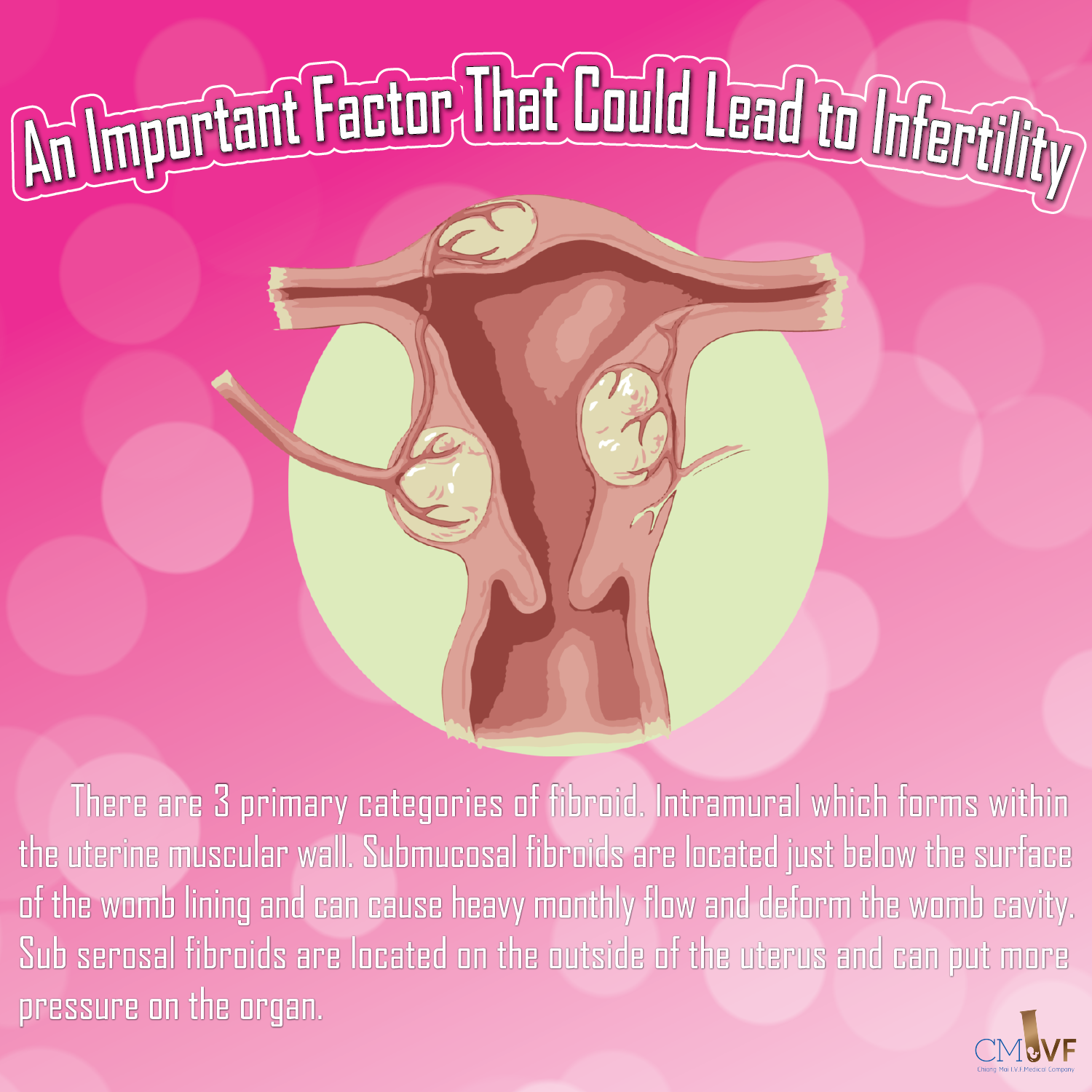
Fibroids is the factor that could lead to infertility in women. They are benign growths that forms inside the uterus, where an unborn child develops and matures. These muscle-and-fibrous tissue-filled fibroids may form in the uterus' muscular wall or cavity. There are three primary fibroid types, and each has a unique set of symptoms. Each person's symptoms are unique, and some women may have no symptoms at all. Fibroids can make it difficult for a woman to become pregnant or carry a child to term. Studies have revealed a connection between fibroids and estrogen levels, despite the fact that the cause and mechanism of their development are still largely unknown. There are 3 primary categories of fibroid. Intramural which forms within the uterine muscular wall. Submucosal fibroids are located just below the surface of the womb lining and can cause heavy monthly flow and deform the womb cavity. Sub serosal fibroids are located on the outside of the uterus and can put more pressure on the organ. Submucosal fibroids, of the three forms of fibroid, are most likely to affect fertility because they develop within the uterine lining. A submucosal fibroid may obstruct a woman's fallopian tube, preventing the release or sperm fertilization of an egg. This kind of fibroid may also hinder a fertilized egg from adhering to the lining of the womb, depending on its size and location. The treatment of fibroids consists of numerous options. Women are frequently given prescription drugs or injections to reduce the growths. Surgery may be an option to remove bigger fibroids. In addition, myomectomy or hysterectomy may be performed in more severe situations. Therefore, attributes such as patient's age, general health, and desire to have children, fibroid size and location, should be considered before any treatment begins.
